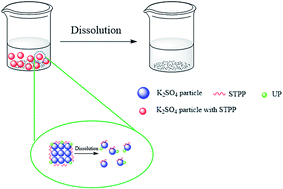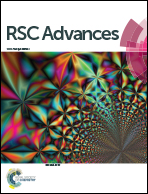Purification and rapid dissolution of potassium sulfate in aqueous solutions
Abstract
Water soluble potassium sulfate dissolves rapidly and completely in water. Its main characteristics are purity and dissolution rate. In this study, the purification and rapid dissolution of potassium salt (K2SO4) separated from potassium brine deposits collected from Lop Nur basin of China (referred to as LN K2SO4) were studied for utilization in agricultural farming as a potash fertilizer. First, the dissolving-crystallizing process was conducted to remove the insoluble content and improve the purity of K2SO4. Second, physical modification of K2SO4 surfaces was accomplished based on the Noyes–Whitney equation. The results showed that the water insoluble content could be completely removed and the purity of K2SO4 reached 100% in the purification process. The dissolution rate was significantly improved with the help of environmentally-friendly additives such as sodium tripolyphosphate (STPP)/urea phosphate (UP). These additives ameliorated the diffusion coefficient (D) and the diffusion layer thickness (h) for K2SO4. Results also demonstrated that a larger K2SO4 surface area (S) induced a higher dissolution rate.



 Please wait while we load your content...
Please wait while we load your content...